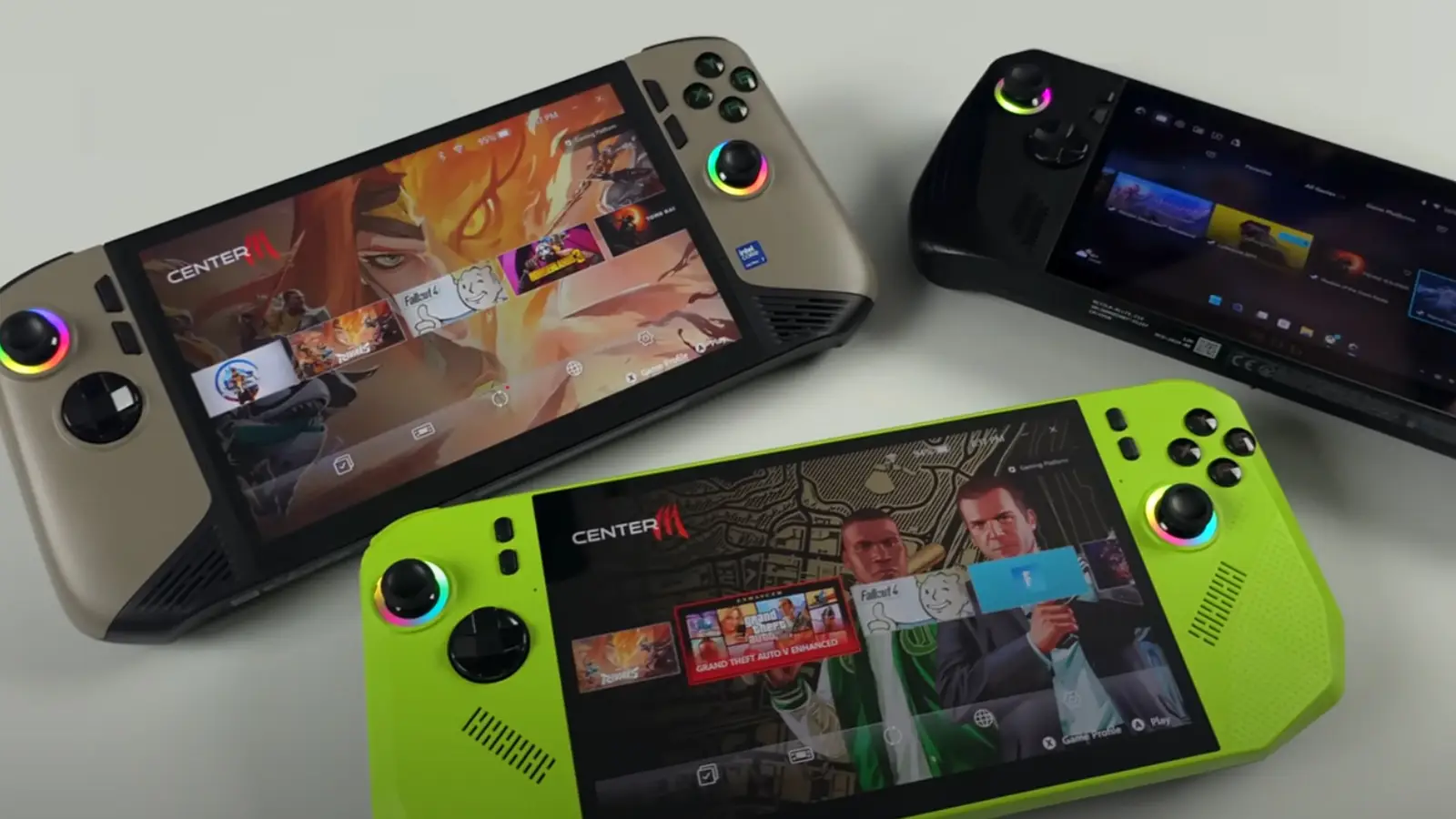MSI Claw 8 AI+ Outperforms ROG Ally X in Portable Gaming Benchmarks
Discover how the MSI Claw 8 AI+ with Intel Core Ultra 7 outshines the upcoming ROG Ally X in real gaming benchmarks, offering better performance and full PC flexibility.
Discover how the MSI Claw 8 AI+ with Intel Core Ultra 7 outshines the upcoming ROG Ally X in real gaming benchmarks, offering better performance and full PC flexibility.

© ETA Prime / YouTube
The portable gaming scene is experiencing a full-blown renaissance, with a wave of high-performance handhelds vying for the spotlight. Among the most anticipated is the Xbox ROG Ally X, priced at $1,050 and promising flagship-level performance in a compact shell. But before you commit to a pre-order, it’s worth looking at what’s already on the market — because the future might already be here.
In a recent hands-on review, well-known YouTuber ETA PRIME put three of today’s most talked-about handheld APU systems to the test, and the findings were telling — especially for those eyeing the not-yet-released Ally X.
The showdown featured three devices: the MSI Claw A8 powered by AMD’s Ryzen Z2 Extreme, the MSI Claw 8 AI+ with Intel’s Core Ultra 7 258V, and the ASUS ROG Ally X, equipped with AMD’s Ryzen Z1 Extreme. Synthetic benchmarks offered some surprises. In Geekbench 6 at 17W TDP, Intel’s chip scored 2,712 in single-core and 8,247 in multi-core — topping its competitors. When the power ceiling was raised to 25W, the Ryzen Z2 edged ahead in single-core, but Intel stayed close with 2,746 points versus Z2’s 2,766. The Z1 Extreme lagged in single-threaded tasks but bounced back in multi-core with 10,434 points at 25W — still falling short of the Z2 Extreme’s 11,163.
Intel’s advantage didn’t stop at CPU tests. In GPU-heavy benchmarks like 3DMark Time Spy, the Intel Arc 140V iGPU led the pack — and not just in theory. Real-world gaming benchmarks echoed the synthetic results. At 25W TDP in Cyberpunk 2077 (1080p, Steam Deck preset), the Intel chip ran the game at 54 FPS, ahead of the Z2 Extreme (46 FPS) and the Z1 (41 FPS). In Shadow of the Tomb Raider, the Z2 pulled slightly ahead at 17W, but Intel reclaimed the lead at 25W. Forza Horizon 5 ran at 83 FPS on the Intel system at 25W, just ahead of AMD’s contenders. Even more demanding titles like Black Myth: Wukong and Horizon Zero Dawn Remastered saw Intel come out on top.
The takeaway? Intel’s Core Ultra 7 258V, as featured in the MSI Claw 8 AI+, delivers competitive — and in many cases superior — performance compared to AMD’s latest offerings. On top of that, the device boasts 32 GB of RAM, an 8-inch display, and out-of-the-box compatibility with Windows. That means full access to mods, emulation for dozens of platforms, and a vast PC gaming ecosystem.
Compare that to the Xbox ROG Ally X, which is expected to ship with 24 GB of RAM, a 7-inch display, and AMD’s Z2 Extreme. Despite the hype, its real-world performance appears to trail behind — and it isn’t even available yet.
Beyond raw specs, the MSI Claw 8 AI+ offers immediate value. You can buy it now, without the uncertainty of future updates or availability. Accessory compatibility is straightforward, and being part of the Windows ecosystem means no restrictions on games, mods, or emulation — from NES classics to PS3 and Xbox 360 titles.
Ownership economics also work in its favor. Steam and Epic’s regular sales, free game giveaways, and the one-time purchase model make PC gaming an increasingly budget-friendly choice. Console exclusives are also losing their edge. Sony now releases hits like Spider-Man and God of War on PC, while Microsoft is fully committed to cross-platform launches. Only Nintendo remains firmly tied to hardware exclusivity — for now.
In the bigger picture, consoles aren’t going away, but handheld PC gaming is undeniably catching up. If flexibility, hardware upgrades, and platform freedom matter to you, then it’s already time to look beyond the Ally X. Because in this race, Intel and AMD aren’t waiting — they’re already delivering.